In 1989, the Lenox Spice Village, a great cultural treasure of our time, was born. And just a few short months after the coveted spice rack’s mail-to-order debut, my mom gave birth to me! Other arguably important things occurred this year, too, including the fall of the Berlin Wall, the invention of the world wide web, and Taylor Swift’s birth, but for now let’s focus on what really matters: Lenox’s soon-to-be chokehold on the spice rack market and what might be considered a pivotal moment in my food-scholar origin story.
I fall perfectly in the middle of the millennial age range, so those of you slightly older than me might remember these Lenox Spice Villages from your own childhoods better than I do. No one in my family had such a spice rack — my mom was a country geese and blue and white crock kind of girl anyways — nevertheless, the impact of this spice jar collection and the idea of storing (or dare I say housing) spices in a coordinated method had a lasting impact on my generation.
The social prescription to store spices in conspicuous collections is undoubtedly rooted in our colonial history of the spice trade. There is, of course, some practicality to storing spices this way (most dried herbs and spices are best kept in cool spaces away from too much direct sunlight), but the aesthetics of display are borne from the belief that spices equaled wealth and worldliness (one day, I’ll tell y’all all about the nutmeg dandies, aka the finance bros of the 18th century).
Fast forward to 1989. Spices, for the most part, are not the same marker of social status that they used to be (that said, every time I use ground ginger, I still hear my mother’s calm, but exasperated explanation of it’s high cost after I accidentally spilled half a jar on the kitchen counter). Spices are solidly middle class and even working class consumables thanks to the vast exploitations of the now centuries old spice trade and the reaches of globalization. Nevertheless, the national psyche still fixates on the symbolism of spices in the larger material culture myth-making of American history and tradition. Displaying spice racks, even if they didn’t contain spices, becomes an attainable form of conspicuous consumption, especially when you could buy one little spice jar at a time.
Using marketing and aesthetics that specifically targeted the gendered traditions that were still very much expected in American women and housewives of the late 1980s and early 1990s, the Lenox Spice Village was akin to a mail-order, dopamine-hit little treat. In the Spring of 1989, the spice houses each cost $19.50; the price was lowered to $14.50 by the fall in a subscription model that lasted for 24 months, 24 houses in total. By the early 1990s, the collection was dubbed Canterbury Crossing and featured hand painted townhouses, villas, Queen-Anne style cottages, Georgian-style homes, and more.
The 1990 commercial for the Lenox Spice Village taps into the nostalgia of the American mythology with other bits of instantly recognizable generally old timey material culture — blue Mason jars, a painted coffee grinder, a water pump, a cast-iron stove, and a hutch with railed shelves full of fancy serving ware (note: those fancy plates would’ve been stored no where near that smoky oven, but I’ll let it slide cause it makes for a great jump scene into the more modern 1990s kitchen). Not important, but the voiceover in this commercial reminds me of Taylor Doose’s hedgy voiceover moment in that episode of Gilmore Girls where they turn Old Man Twickham’s house into a museum of potentially possible Stars Hallow historical events — and I am here for it.
In the early 1990s, the Lenox Spice Village line was discontinued, some argue, because consumer appetite for collectibles was waning. While this might be somewhat based in truth, there was also a recession in the early 1990s and a combination of inflation, multiple wars, and other significant moments of general destabilization might have contributed to consumer spending habits. Interestingly, Lenox might have discontinued this specific spice jar set, but swiftly replaced it with other collectable options (wait till the end, I promise it’s worth it!).
The spice village was a near instant hit and came at a time that other folks have identified as an era when Americans were really into collecting things. Readers, if the history of the spice trade is any indication, for better or for worse, we’ve always been into collecting things. I love collecting things, my mother loved collecting things, my grandmothers loved collecting things. While collecting things isn’t a gendered activity, this particular item was directly targeted at women, so I find myself wondering if these same women were also soon chastised for enjoying and spending money on these spice jars? If liking pumpkin spice is up for mockery, why wouldn’t the pumpkin spice house be, too? (note: there is no Lenox Pumpkin Spice house….yet…).
I allow myself this line of thought because, well for starters, today is my birthday, but also because, as luck (read: clever attention to the Lenox Instagram marketing strategy over the past few weeks) would have it, Lenox just sent out an email for pre-orders for the relaunch of the original Lenox Spice Village set. Honestly, it’s like the Lenox Spice Village and I are destined to be, our fates intertwined over the decades!
Women, especially millennials who now possess spending power that they didn’t in their late 1980s and 1990s childhoods, are going to be excited about this relaunch and we should let them be. Because finding joy in things is okay. Finding joy in practical objects also being aesthetically pleasing is okay. People spending their money on things others find impractical is okay. Women finding joy in things is, say it with me now, okay.
Now, if you’re a millennial or anyone else who doesn’t find joy in the Lenox Spice Village, don’t worry. You’ve got options! And maybe these are the spice jar collections that you remember from your past or symbolize your particular version of American nostalgia. Without further ado, I give you the lesser known (at least to those of us outside the vintage/collector’s circles) 1990s Lenox Spice Rack Subscriptions:
Lenox Orchard Spice Jar Collection, c. 1994.
Love the lil fruits on top.
Lenox Spice Carousel Spice Jar Collection, c. 1994.
If only the set up was all on a lazy Susan, but alas.
Lenox Birds and Blossoms Spice Jars Collection, c. 1995.
Put a bird on it before put a bird on it!
Lenox Spice Garden Spice Jar Collection, c. 1995.
Part spice jar collection, part plant identification!
Lenox Cats of Distinction Spice Jar Collection, c. 1995-1996
Quite literally the best thing I’ve ever seen in my life. I would pay good birthday money for these.
Lenox Walt Disney Spice Jar Collection, c. 1996.
Lol Mickey is Onion.
BONUS! Lenox Seaside House Spice Jar Collection , c. 2000s.
For the coastal grandmillennials.






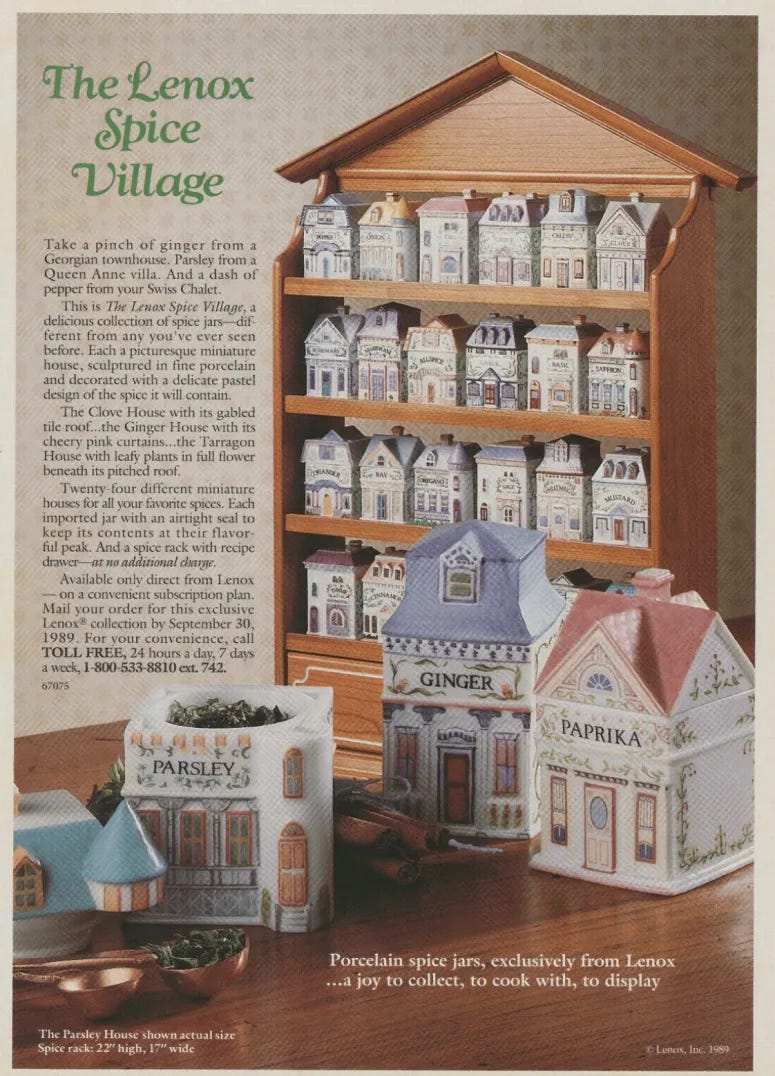
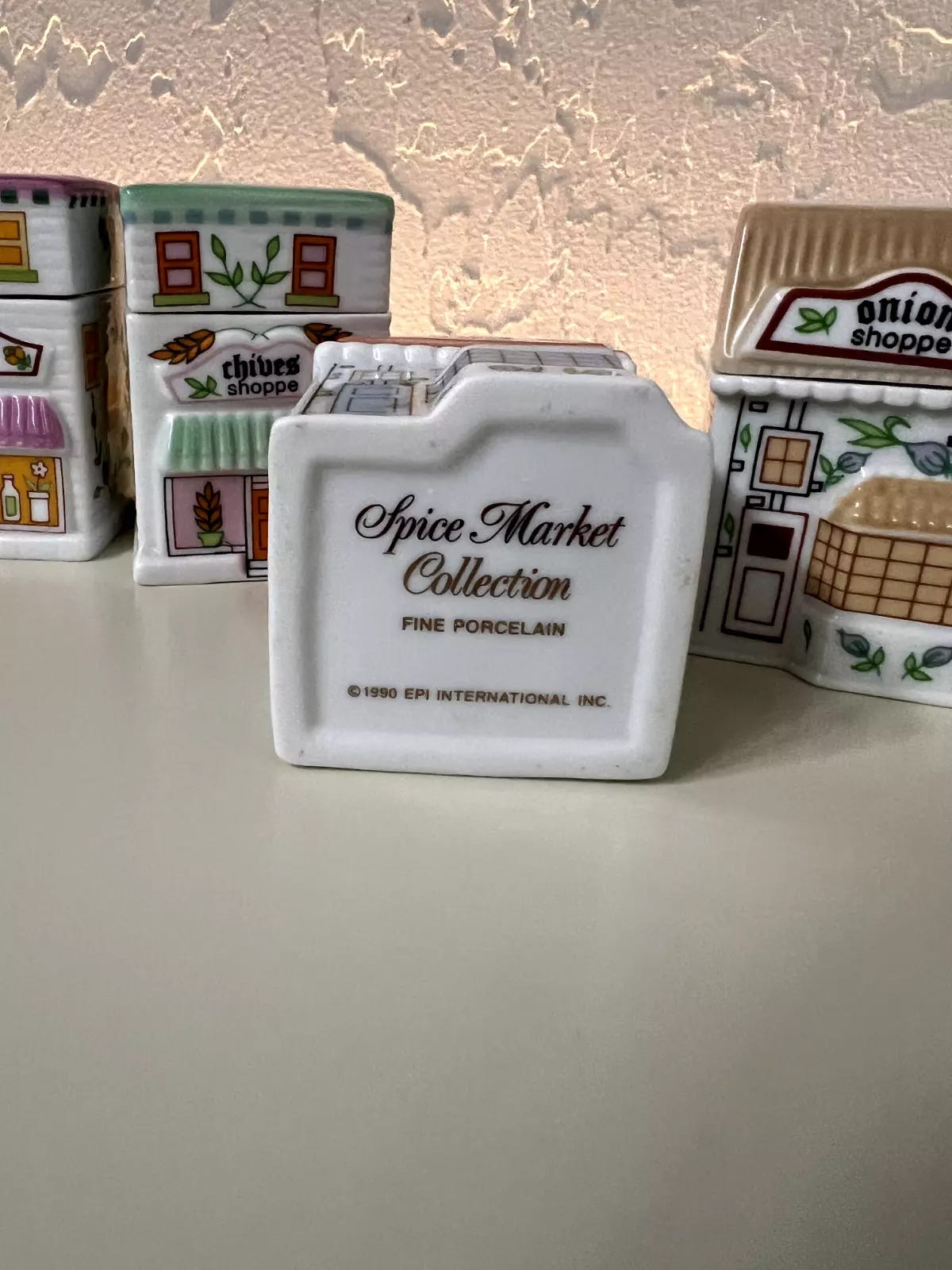
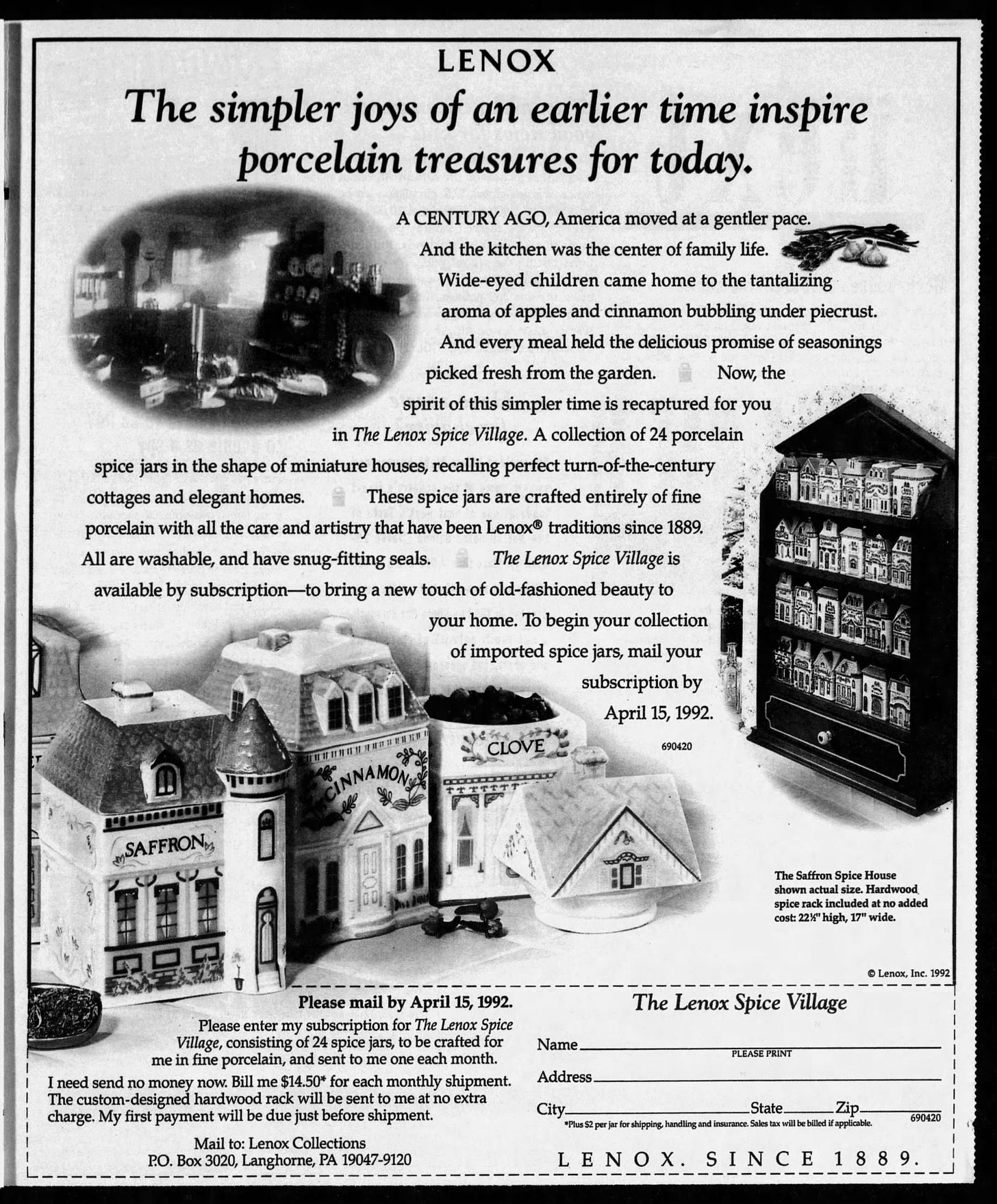

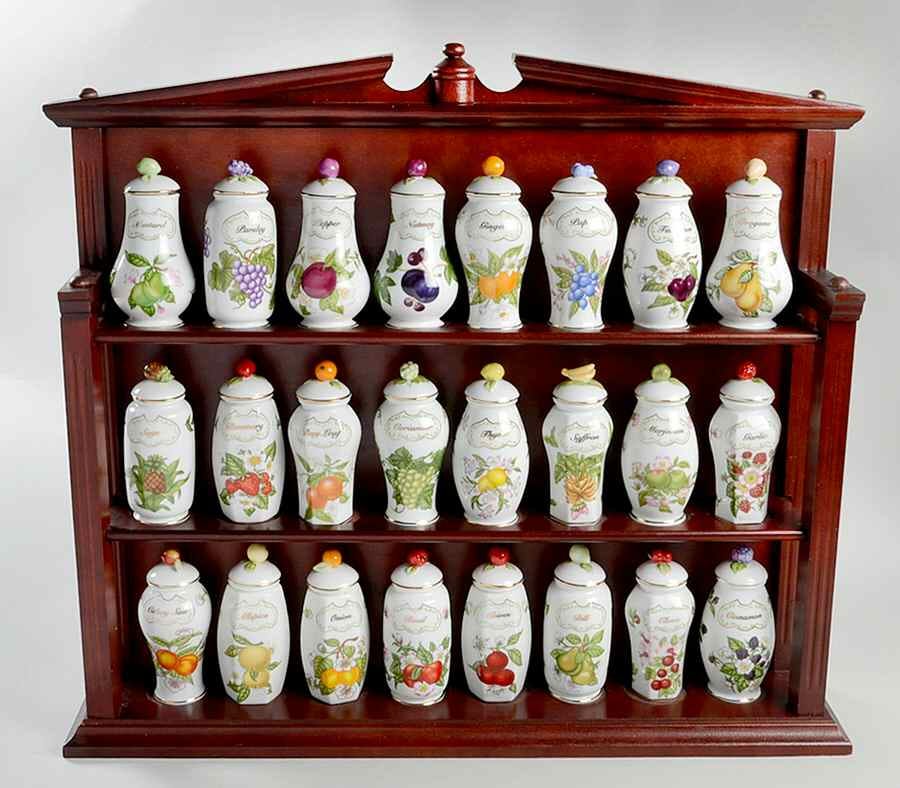
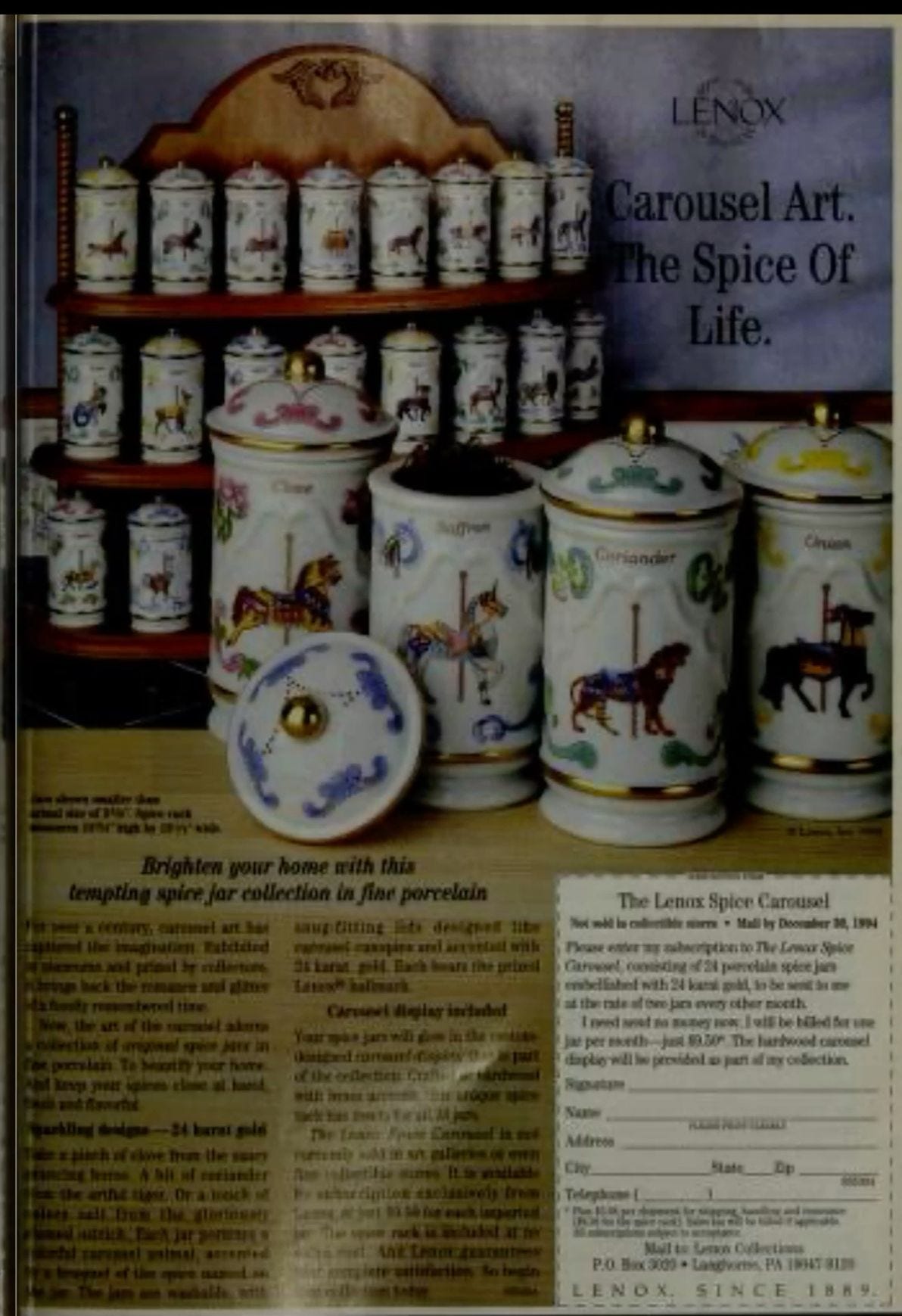
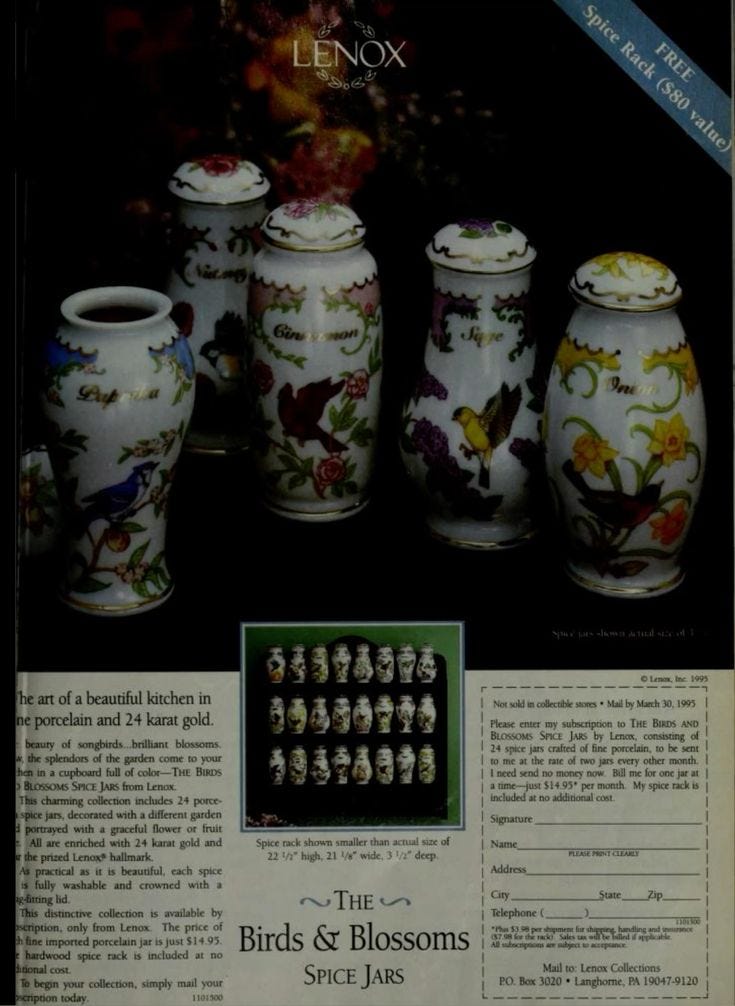
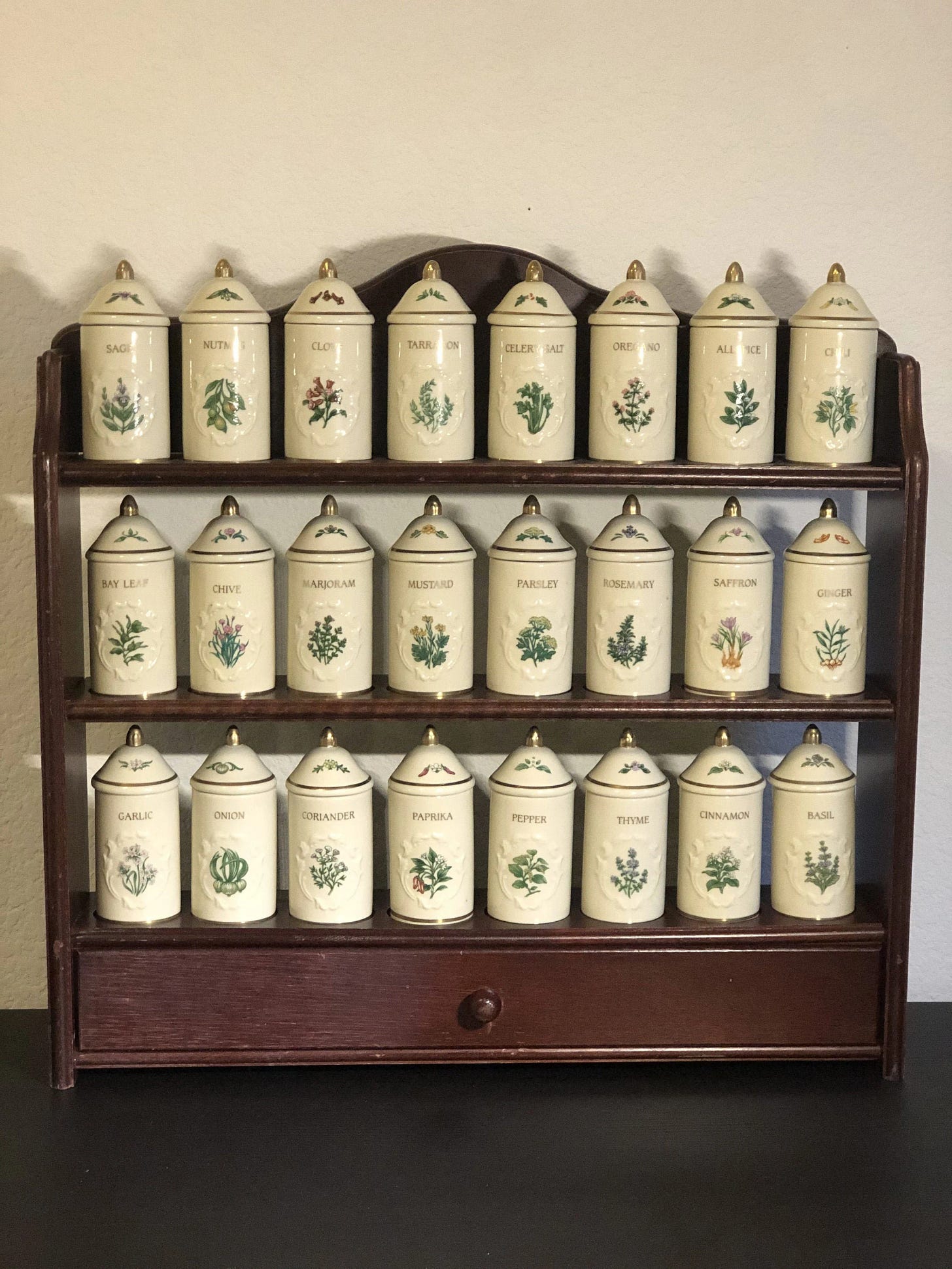
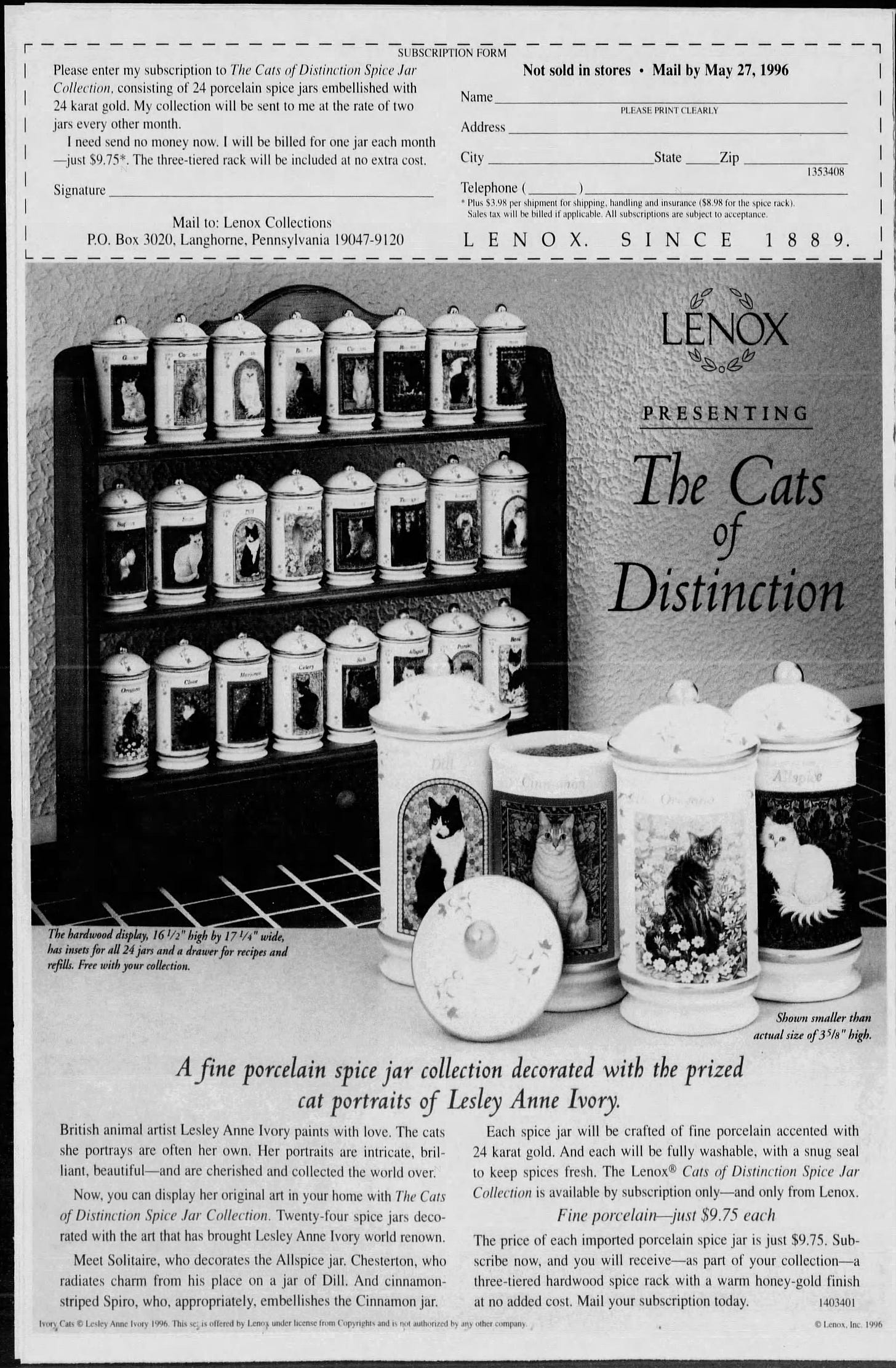
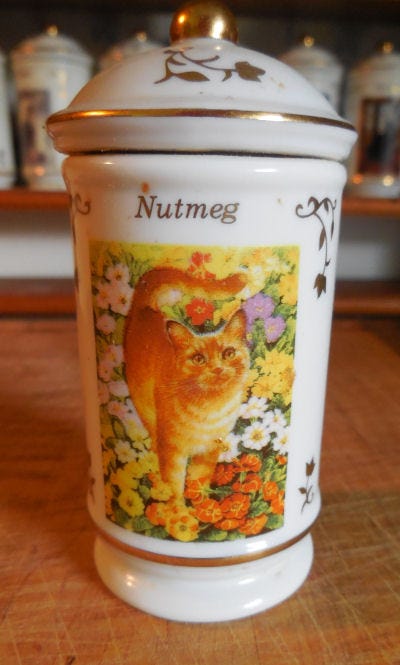
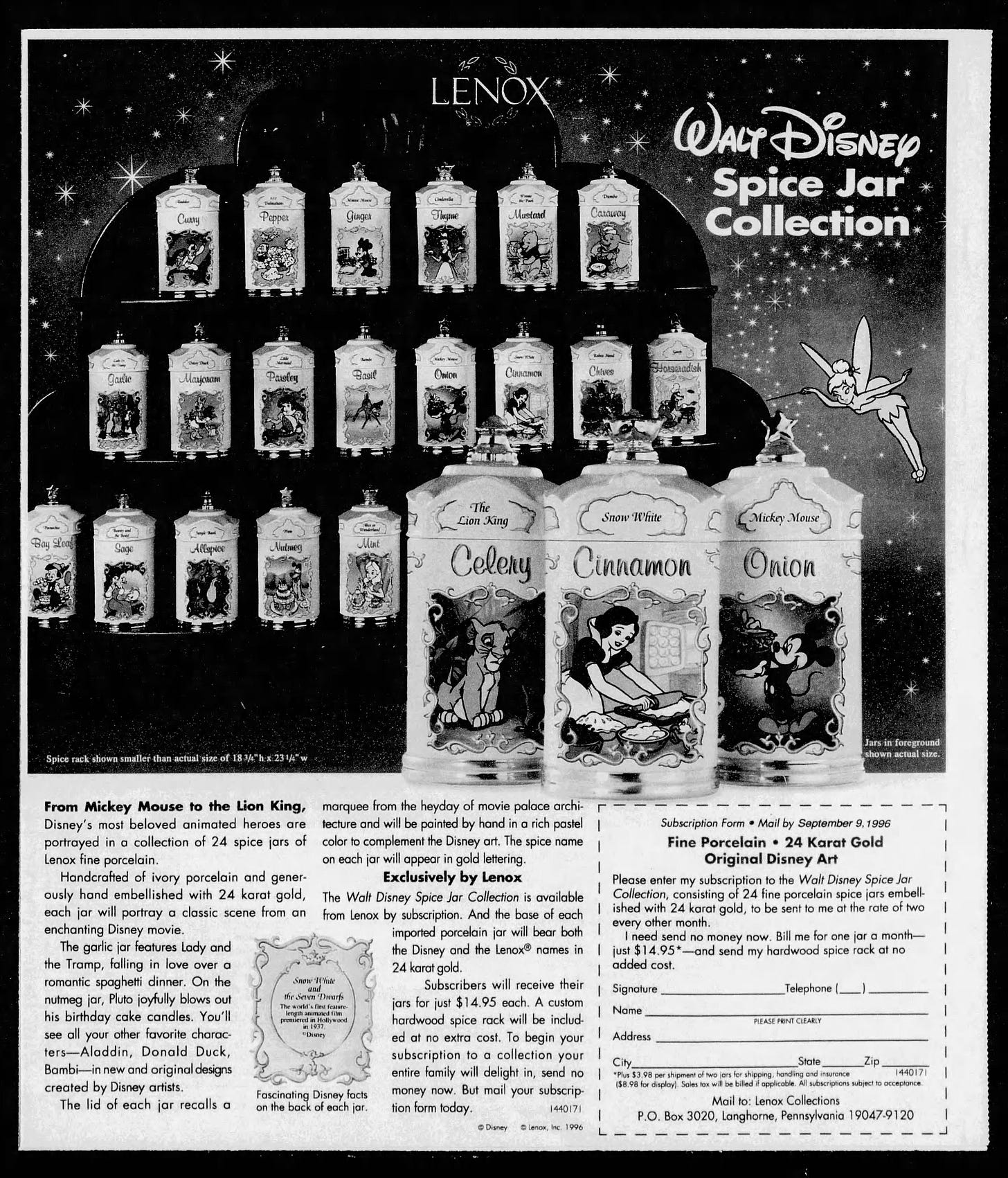
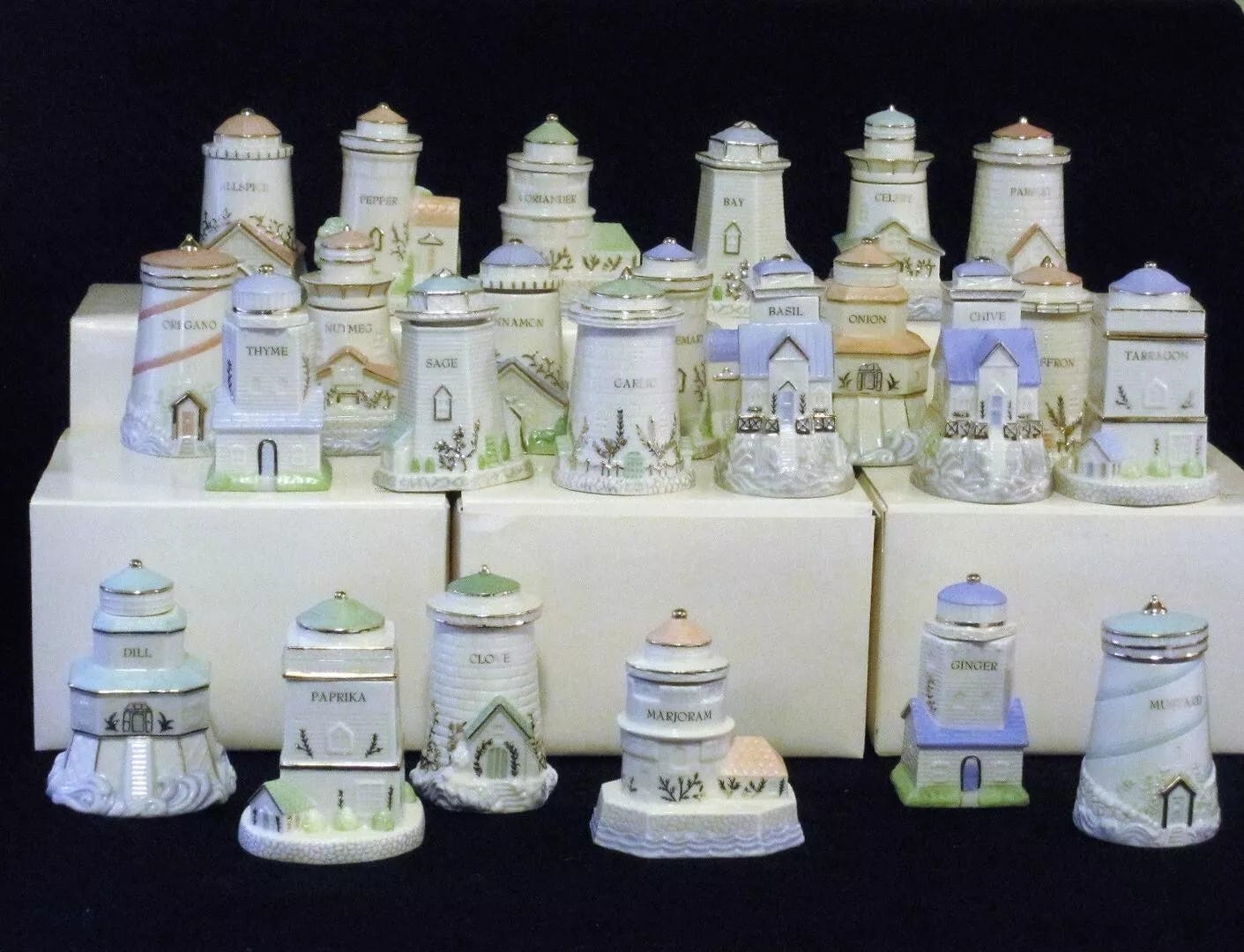
A very happy birthday! You and Lennox must be fated. Oh my gosh, that commercial! 😂 I was born in 1980. We didn't own a set of those spice jars but I do remember them and saw them at other people's houses. Those orchard ones are super cute. I'd totally get those now. I best not start though, because I'm already collecting so many things.... 🫠
I think studying the spice trade is so fascinating. You might be interested in my podcast episode "War & Spice" about spice rationing during WWII. It's definitely one of my top favorite ones to research.
Really interesting post. Thanks for sharing!
Love this! Spice storage has always fascinated me. I remember these very well and a Gen X-er.